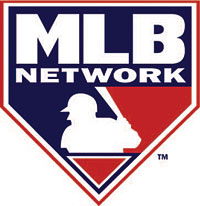All Baseball, All the Time
SECAUCUS, N.J. On Jan. 1, Major League Baseball raises the curtain on its high-definition MLB Network, the largest cable network launch in history, reaching a potential 50 million homes.
The large venture will also have a large home: a 140,000-plus-square-foot space in Secaucus, N.J., formerly the home of MSNBC. "A large news organization has a lot of similarities to what we're trying to do," said Mark Haden, vice president of engineering and IT at MLB Network. "The initial space design at MSNBC did, for the most part, work out very well for us."

But though MLB won't be the first television operation to occupy the building, the technical design began with a blank sheet of paper. "You could basically call it a green field," said Haden. "We don't have any legacy workflows going. We don't have people who are used to doing things one way. We've got the opportunity to be cutting edge."
IT-HEAVY
The facility is designed around a pair of studios, one, a classic sports news set, and another that Haden would only describe as a "demonstration space" at this point in time. The network will have 25 edit suites: 10 higher-end, surround-capable Final Cut Pro systems, and 15 quick-turnaround highlight editing rooms using the Thomson Grass Valley K2 Aurora editing platforms.
There were three goals that Haden and his fellow designers, including CBT Systems, a San Diego-based television design, engineering and integration firm, have kept in mind while building the studios:
- Quick turnaround of video material;
- Long-term preservation of video material;
- Getting as many different looks at every game as possible.
More broadly, he said, the network aims to service fans who are interested in more than just the scores of games that day. "If there are 15 games a day being played, we want to look at those and get more granular, get right down to the details of them."
"It's basically a very IT-heavy network," said Haden. "My department is actually very strong with IT professionals, some of whom have crossover with broadcasting, and some of whom are classic IT architects, who are building the system for us."
For daily operation, the tapeless workflow at MLB Network is built around a storage area network (SAN) made up of 36 RAID protected Thomson Grass Valley K2 HD media servers, configured in two redundant paths of 18 servers each. Each of those SANs provides 1,000 hours of 100 Mbps HD storage.

Introduced at the 2008 NAB Show, the Miranda-Nvision display/router configuration allows MLB Network staff monitor more than 500 video inputs. Ten thousand more hours of 100 Mbps storage will be provided by a nearline SAN, with Sun Microsystems SL8500 archive systems providing 30,000 more hours of such storage. File transfers between each system are easily made.
One "cutting edge" aspect of MLB Network's facility is its video monitoring. Through a collaboration of Miranda, with its Kaleido-X Multi-Image Display System, and Nvision with its NV8576 large-matrix digital multiformat router, staffers at the facility will be able to monitor more than 500 video inputs over more than 60 high-quality multi-image display outputs.
"Everyone's got different monitoring needs," said Haden. "We can actually preset a monitor configuration based on user preference, much like you would program the screen on your computer."
The Miranda display system and Nvision router are integrated such that a command from the display system can instruct the router to change a video signal sent to the display system, and a command made from the router system will be reflected in the display on view.
"The interface is seamless to the operator," said Paul Greene, director of business development for Nvision and product manager for the NV8576. He said under-monitor displays follow various video sources to the multidisplay monitors, where users can choose whether or not to display additional information such as timecode.
MORE METADATA
One of the advantages of a file-based workflow and storage system is its ability to carry a virtually unlimited amount of metadata (descriptive text) along with the video and audio material. Haden foresees more metadata to be added at each step of the operation.
"What we're hoping to do is find some middleware where, as we ingest the feeds of all the games, we can basically put in live logging that doesn't require people," Haden said. At more than 30 logging stations, additional data can be added.
"Anybody in their office can add logging data to it, and when we start editing and EDLs [edit decision lists] go in, and clips, before they get down to the offline cuts, more data can be added to it…as it gets manipulated, more data gets wrapped around that media."
One of the Rumsfeldian known unknowns that media facility designers including Haden's crew at MLB Network face is what turns television will take in the future. Haden finds the file-based handling of media designed into the new Secaucus facility reassuring.
"It's a lot more obvious now how file transfer protocols are intrinsic to where television is going," he said. "It doesn't matter [what direction television takes], because video [to our system architects] is a large file. That's all they care about, so it's become easier now, and with the green field we've got, it's obvious this is the way to go."
The professional video industry's #1 source for news, trends and product and tech information. Sign up below.
